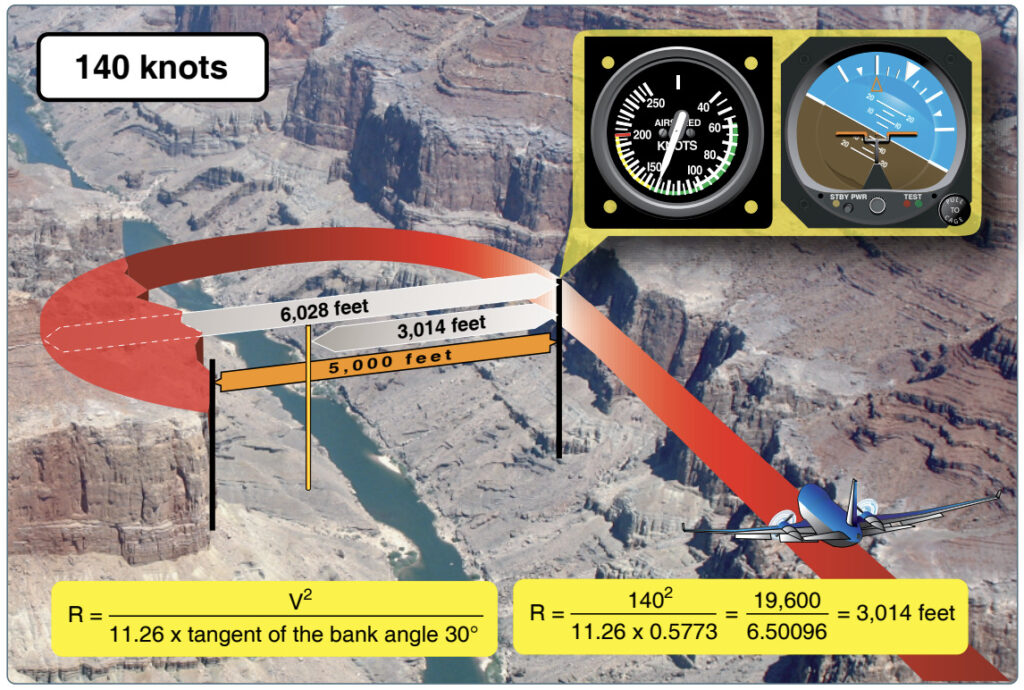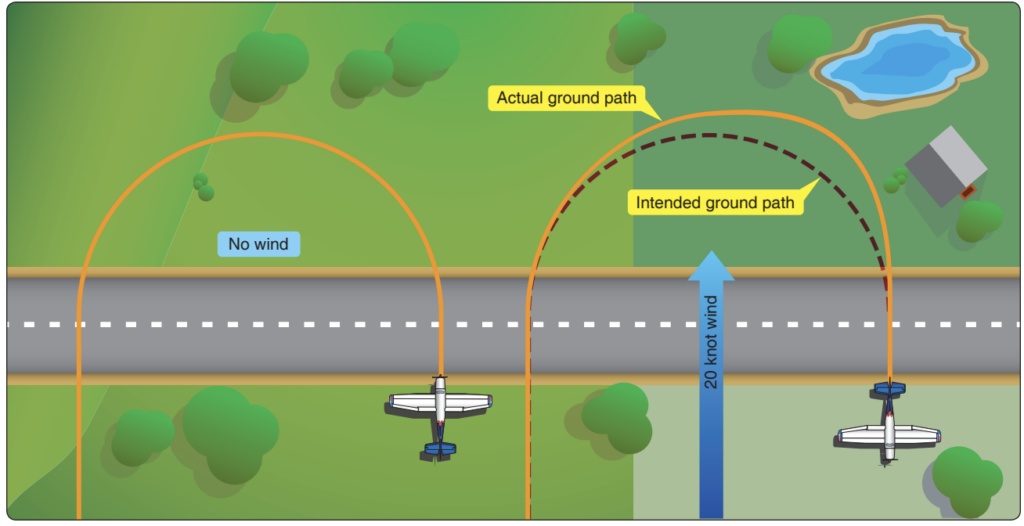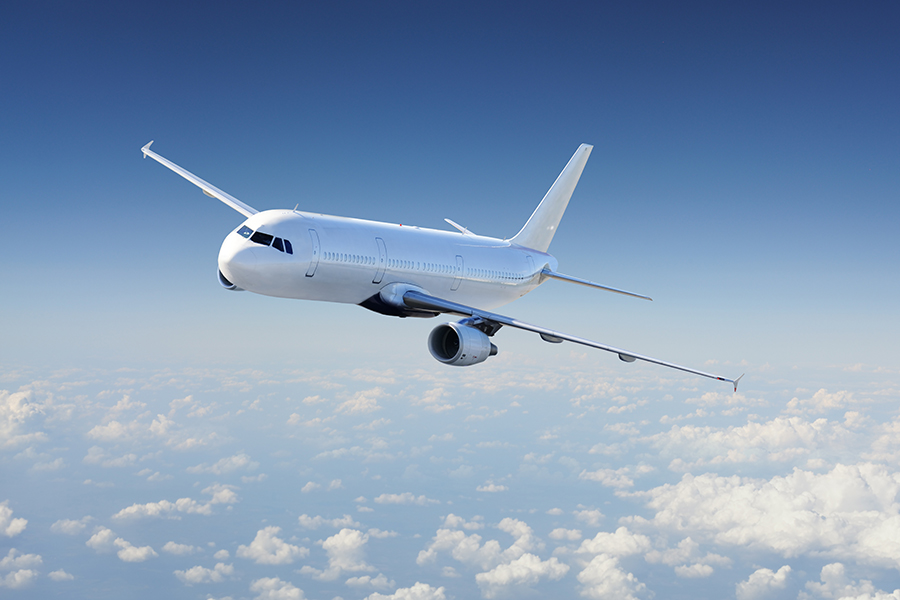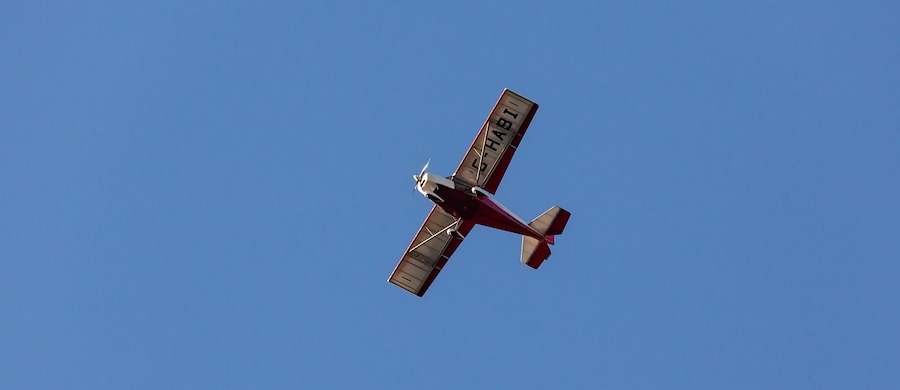Understanding the radius of a turn is crucial to the safe operation of an aircraft as a pilot.
The turn radius (or the radius of a turn) is the horizontal distance required for an aircraft to turn. It varies according to the bank angle and the square of the true airspeed. The turn radius is measured from the center of the turn to the aircraft.
Turn diameter is the horizontal distance required for an aircraft to turn, measured from one side of the turning circle to the other.

The radius and diameter of non-standard rate turn vary based on the bank angle, rate of turn, and airspeed. The turn radius becomes larger as airspeed increases. When both the bank angle and rate of turn increase, the turn radius will decrease.
This article will dive deep into the mechanics of standard and non-standard rate turn radius calculations, giving you a solid understanding of this vital concept.
Turn Radius Explained
The first thing you need to know is that how tightly you turn (i.e., the radius of the turn) depends on both the rate of the turn and your airspeed. In addition, the rate of turn is also determined by bank angle and airspeed.
Don’t fall victim to the confusion between the rate of turn and radius of turn:
- Rate of turn: How quickly your heading changes.
- The radius of turn: How tightly you turn (how small your turning circle is).
When airspeed increases, the turn radius increases. When the rate of turn increases, the turn radius decreases.
In other words:
- Airspeed increase -> Turn radius increase (larger turning circle)
- Rate of turn increase -> Turn radius decrease (smaller turning circle)
Have a look at the example from Chapter 5 (5-41) of the Pilot’s Handbook of Aeronautical Knowledge (PHAK):

Aircraft flying at 120 knots, 30-degree bank angle.

Aircraft flying at 140 knots, 30-degree bank angle.
By mistake, two aircraft flew into a canyon. The canyon is 5,000 feet wide and has tall walls on each side. The pilot in the top photo is flying at 120 knots. The pilot in the bottom photo is flying at 140 knots.
After the pilots realized their mistake, they quickly banked the aircraft and changed course using a 30-degree bank angle.
In the top photo, this 30° bank angle turn required about a 4,000 feet radius to complete a 180° change in direction and safely get the pilot out of the canyon.
The aircraft in the bottom image is flying at 140 knots and uses a 30° angle of bank to reverse course. Although it is only flying 20 knots faster than the aircraft in the top image, it requires an over 6,000 feet turn radius to change course safely. Unfortunately, the aircraft will hit the canyon wall because it is only 5,000 feet across.
In other words, speed has a more significant impact on how much space is needed to turn than anything else. Unfortunately, many pilots have mistakenly increased the angle of their bank instead of reducing speed when faced with this scenario.
Effect of Wind
Wind also plays a crucial role in the final turn radius of an aircraft with reference to the ground.
Without wind, a pilot can execute a ground-based constant radius turn by maintaining the same bank angle throughout; however, with any wind present, the difficulties of completing such a maneuver increase.
Any wind component will create a distorted turning circle with reference to the ground if a constant bank angle is maintained.
Consequently, when performing ground reference turns in the presence of wind, pilots must account for drift by varying the bank angle accordingly.
If the pilot is not performing turns with reference to the ground (or a navaid, either physical or virtual), the pilot does not need to vary the bank angle throughout the turn.

Standard Rate Turn Radius (Rate One Turn)
A standard rate turn (also known as a rate one turn) is a turn in which the aircraft makes a 360-degree change in heading at a rate of 3 degrees per second (2 minutes total).
Though the bank angle of standard rate turns fluctuates based on airspeed, the turn will always take two minutes to complete because you will change the bank angle to maintain a rate of turn.
Therefore, the higher your airspeed, the larger the turning circle will be, and the lower your airspeed, the smaller the turning circle will be, the time will remain 2 minutes, but the bank angle will be different for different airspeeds.
On the other hand, non-standard turns can have any rate of turn, so calculating the radius is more complicated.
A standard rate turn’s diameter is usually around 1% of your ground speed. The radius is half of that diameter. For example, if you fly a standard rate turn at 100 knots, your turn will measure approximately one nautical mile in diameter and 0.5 nautical miles in radius.
How to Calculate Bank Angle for a Rate One Turn (Standard Turn)
To calculate the approximate bank angle required for a standard rate turn, divide the True Airspeed (TAS) by 10 and add 7.
For example, an aircraft flying at 120 knots TAS will require a bank angle of 19 degrees for a standard rate turn:
- 120 TAS / 10 = 12
- 12 + 7 = 19 degrees
Why Is Turn Radius Important?
The radius of turn is important to understand when flying. Understanding the factors that influence the radius of a turn can help you plan and avoid obstacles during flight, keep you in the appropriate airspace for your altitude, and more.
Moreover, understanding the relationship between airspeed, bank angle, and rate of turn is fundamental to aircraft control. When these three factors are correctly balanced in a standard rate turn or non-standard rate turn, they will work together to keep your aircraft on the desired path.
Conclusion
It’s crucial to understand the correlation between airspeed, bank angle, rate of turn, and turn radius from both a practical and navigational standpoint, but most importantly, from a safety perspective. Although increasing the bank angle might not be an option at all times, usually slowing down is the simplest way to make sharper turns.
We hope this article has shed some light and given you a base-level understanding of the theory behind an aircraft’s turn radius and how you can stay safe while maximizing performance.



